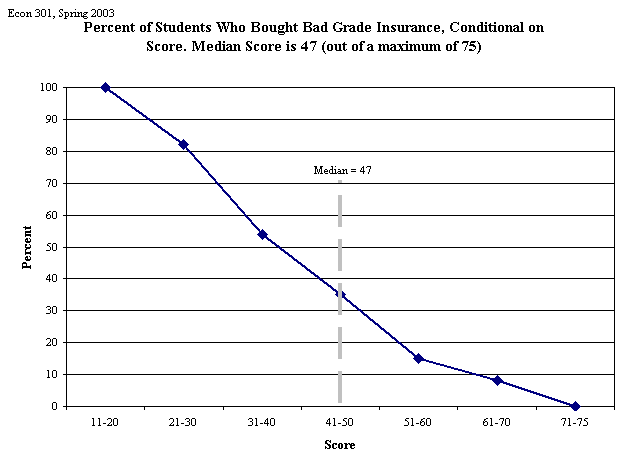
Econ 301 Spring 2003
Results on the Sale of Bad Grade Insurance
On the Second Midterm Exam, students were offered the chance to buy Bad Grade Insurance. Here was the deal. If you buy the insurance and your score on the exam is in the bottom half of all scores, then we add two points to your score. If your score is in the top half, we add nothing to your score. However, the price of the insurance is 1 point. So, if you buy insurance and are in the bottom half you will have a net increase of one point in your score. However, if you buy insurance and are in the top half, then you will have a net decrease of one point in your score.
Note that if a student's score were a perfectly random event, and if everyone got the insurance, then as the seller of the insurance I would break even--half the people are always below the median score by definition, so what I collect in premiums for insurance is exactly what I pay out in claims. However, after students write their answers (but before we grade them!) students have better information than I do about whether they will finish in the top or the bottom half. Those more likely to be in the bottom half should be more willing to buy the insurance. As a result, I am likely to collect less in premiums than I pay in claims. This effect is called adverse selection--we don't get a random selection of people taking up insurance, but we the market selects the risks that are bad, or adverse, from the point of view of the seller. Adverse selection keeps me from breaking even on selling of the insurance. Ultimately it makes it harder for insurance to be provided at Pareto efficient levels.
Let's see how bad adverse selection was with our class. Here's a chart that illustrates what happened:

As you can see, there was a severe adverse selection problem. 38 Student bought bad grade insurance and 30 made claims--that's a lot more than half! Thus my loss was 22 points (= 38 - 2*30).
Here's another way to look at the data. From here you can see that people have a pretty good idea of the risk they face.
